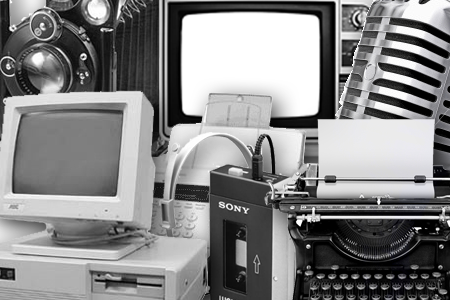Is Your Brand Message Archaic?
Desktop computers, fax machines and the floppy disk drive – at one point each of these technological advances were fundamental components of our daily lives, but now, most are considered archaic.
The same may be true for your classic 30,000-foot brand messaging. It's obsolete.
The proliferation of new media channels and mobile devices creates buyer demand for information and insights that are relevant to them and their needs, when and where they need it. They don't have the time or the inclination toward the big, bad company-centric branding campaigns of the past. It's now a 3-foot brand message – the distance between your customer and their digital access screen of choice – that counts.
Unfortunately, the coolness factor associated with the technology involved has skewed some of the focus toward the medium, but it's still the message that really rules. And, it requires you to re-think your brand messaging development approach.
Insights not Promotions
People want ideas. They want to be inspired. Insights are for sale in this new messaging environment where re-tweeting stuff that impresses you is part of the daily routine. Unfortunately, research shows that your prospective decision-makers believe only 10-14% of company selling messages offer anything unique or relevant.
That means 90% of the stuff you put out is seen as the same as your competitors. After a while, your prospects and customers will just tune out the blah, blah, blah. And now you are faced with breaking through a physical barrier more difficult than penetrating the earth's gravitational field.
Make your Brand Live Inside Your Customers' Story
Here's how you do it. Instead of telling a brand story that is all about you, translate your messages to live inside your prospects' and customers' story.
All humans live in story. Your story is the window through which you look at your world. Your story affects how you make decisions. Developmental psychologist refers to this concept as your "schema."
Pretend for a minute that you are a sea captain living in the early 14th century and you believe that the earth is flat. Your long-range planning tool is a spyglass – a little telescope that you can pull out of your pocket and extend so that you can see far distances. This is your risk avoidance tool. It helps you determine where the earth "ends" so you don't risk falling off.
Now imagine that there's an inventor who happens to be living during the same period. He has discovered a great new navigational technology – the compass. He brings it to you and says, "With this new invention you can sail your ship due West and discover the other side of world." Would you be sold? Probably not. Why? Because you live in a "flat world" story. You believe if you buy this technology, it will kill you as you blindly sail off the edge of the earth.
This analogy holds true today when your sales and marketing team tell the brand story about who you are and what you do. Your story needs to be translated into your prospects' world. What top companies have figured out is that everything they do must be translated from a story about you to a story about your prospect. Otherwise, your brand risks becoming archaic like the desktop computer, fax machine, floppy disk drive and the spyglass.
Learn how to tell a story that sells watch – The Power of Story.
Filed under: Deliver Conversations that Win, The Power of Stories Tagged: Brand message








Timothy Riesterer's Blog
- Timothy Riesterer's profile
- 3 followers




